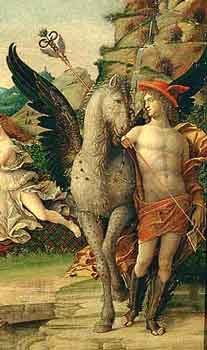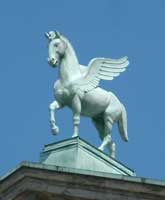.
"This is the account that I read, and not far from the tomb is the temple of Athena Chalinitis (Bridler). For Athena, they say, was the divinity who gave most help to Bellerophontes, and she delivered to him Pegasus, having herself broken in and bridled him" Pausanias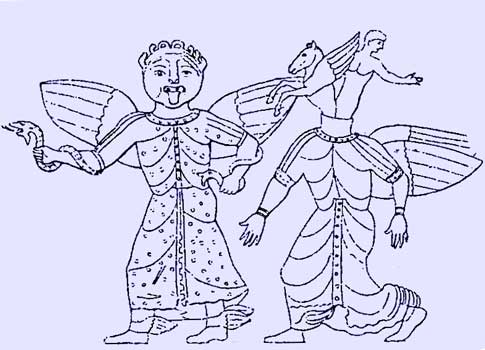
Birth of Pegasus and Chrysaor from the head of Medusa
In Greek mythology, Pegasus, or Pegasos (Πήγασος) was a winged horse that was the foal of Poseidon, in his role as horse-god and the Gorgon Medusa.
Descriptions vary as to the winged stallion's birth and his brother the giant, Chrysaor; some say that they sprang from Medusa's neck as Perseus beheaded her, a "higher" birth, like the birth of Athena from the head of Zeus. Others says that they were born of the earth as Medusa's blood spilled onto it, in which case Poseidon would not be their sire. Minerva caught and tamed Pegasus, and presented him to the Muses.
The word Pegasos is derived from the Greek for the word spring, and everywhere the winged horse struck hoof to earth, an inspiring spring burst forth: one on the Muses' Mount Helicon, the Hippocrene ("horse spring"), at the behest of Poseidon to prevent the mountain swelling too much and another at Troezen.
Mounted on Pegasus, and with the Gorgon's head safely in his magical bag, Perseus was completed as a hero, and was ready to win Andromeda.
Pegasus aided the hero Bellerophon, who is a double in some way for Perseus, in his fight against both the Chimera and the Amazons. There are varying tales as to how Bellerophon found Pegasus, some say that the hero found him drinking at the Pierian spring and that Polyidus told Bellerophon how to find and tame him, others that either Athena or Poseidon brought him to Bellerophon.
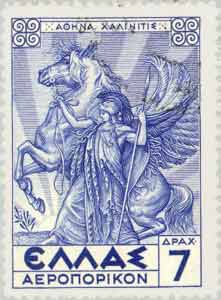
Athena Chalinitis with Pegasus.
This is the account that I read, and not far from the tomb is the temple of Athena Chalinitis (Bridler). For Athena, they say, was the divinity who gave most help to Bellerophontes, and she delivered to him Pegasus, having herself broken in and bridled him. The image of her is of wood, but face, hands and feet are of white marble. Pausanias 2.4.1
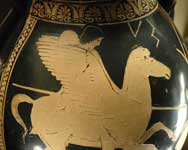
|
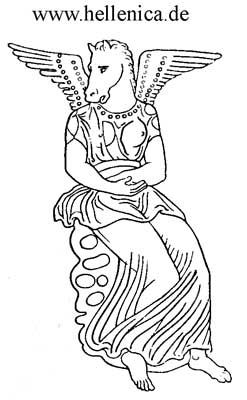
Medusa with a Pegasus head, from a red figure Amphora now in Naples, probably a symbol of the birth of Pegasus
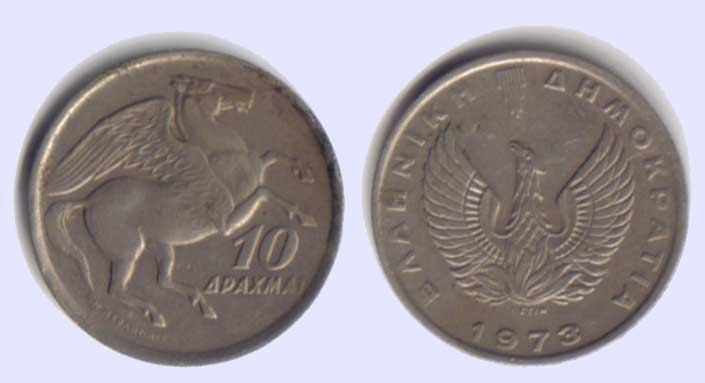
Pegasus 10 Drachmae Coin 1973, Right Side the Phoenix
|
Pegasus, Poznan Opera |
|
Prior to aiding Bellerophon, Pegasus brought thunderbolts to Zeus, and following Bellerophon's death he returned to Mount Olympus to aid the gods. In his later life, Pegasus took a wife, Euippe (or Ocyrrhoe), by whom he had two children, Celeris and Melanippe. This family is the origin of the winged horses.
Pegasus was eventually turned into a constellation, but a single feather fell to the earth near the city of Tarsus (hence its name).

The legend of Perseus was the basis for the film Clash of the Titans, the last movie to feature Ray Harryhausen's stop motion special effects.
Athena and Pegasus, Theodoor van Thulden
Pegasus and the Muses, Girolamo Romanino
Four Muses and Pegasus, Caesar van Everdingen
Bellerophon and Pegasus, Bertel Thorvaldsen
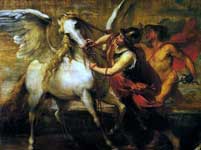
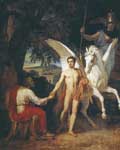
Bellerophon, Alexander Ivanov c. 1829
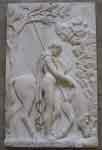
Bellerophon and Pegasus, Julius Troschel
Muse on Pegasus Odilon Redon
Pegasus, Alte Oper, Frankfurt, Germany
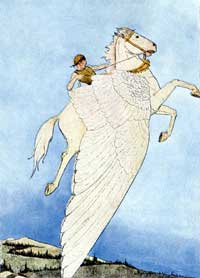
Perseus on Pegasus Hastening to the Rescue of Andromeda
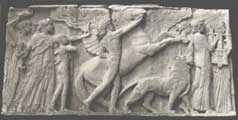
The Pegasus Panel, Bruno Louis Zimm

Music
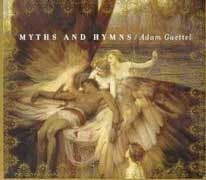
Adam Guettel, Pegasus (1998), Myths And Hymns
See also : Greek Mythology. Paintings, Drawings
| Ancient Greece
Science, Technology , Medicine , Warfare, , Biographies , Life , Cities/Places/Maps , Arts , Literature , Philosophy ,Olympics, Mythology , History , Images Medieval Greece / Byzantine Empire Science, Technology, Arts, , Warfare , Literature, Biographies, Icons, History Modern Greece Cities, Islands, Regions, Fauna/Flora ,Biographies , History , Warfare, Science/Technology, Literature, Music , Arts , Film/Actors , Sport , Fashion --- |
Retrieved from "http://en.wikipedia.org"
All text is available under the terms of the GNU Free Documentation License

